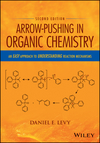Last September, I posted a blog (Academic Institutions and Drug Discovery, 9/30/09) focused on the question of where the next generation of drug candidates will emerge. In that post, I described a movement to utilize graduate research programs as drug discovery engines. I also described why I believe that "this is a very bad idea." I still hold strongly to that philosophy and maintain that academic institutions are best suited for education. Any retooling to support commercial efforts as primary activities will serve little more than to dilute the quality of the education provided to graduate students. Notwithstanding, there has been a steady emergence of medicinal chemistry research emanating from academicians. This is perhaps most noticeable when browsing the poster sessions at the recent American Chemical Society meeting in Boston.
Since the beginning of my affiliation with the American Chemical Society, I have consistently paid dues to the division of organic chemistry and the division of medicinal chemistry. Both divisions had solid strengths and identities. Specifically, the division of organic chemistry provided a forum for academic institutions to highlight the most cutting edge developments in organic chemistry - whether total syntheses, new methodologies or the identification of novel natural products. On the other hand, the division of medicinal chemistry provided an appropriate forum for the presentation and discussion of efforts emerging from industry. This division made a great deal of sense - especially since these complementary divisions frequently collaborated on symposia where the bridges between organic and medicinal chemistry could be highlighted.
One particular observation from last week's meeting in Boston centered around the fact that the distinctions between the organic and medicinal chemistry divisions are becoming blurred. I am not implying that the quality of the contributions is suffering. Walking through the organic posters, the strength of the research presented is clearly represented by the diversity of work emanating from academic institutions worldwide. What truly surprised me was the number of academic institutions presenting posters in the division of medicinal chemistry. I estimate that academic posters exceeded industrial posters by at least 60%. Based on my previously published convictions, I am concerned with this trend. So, if academic institutions insist on supporting drug discovery programs, how can these activities support education and not result in diverting efforts away from the cutting edge research essential to the training of the next generation of scientists?
Dual Purpose Chemistry - The Merging of Education and Drug Discovery
At the Boston ACS meeting, I attended a session on the concept of open-source chemistry. In one lecture, I learned about the Distributed Drug Discovery (D3) effort developed by researchers at Indiana University-Purdue University Indianapolis. The model was loosely compared to the SETI project in which computers around the world, not in use by their owners/institutions, were used to analyze data. Applied to chemistry, this translates to the use of undergraduate laboratory activities simultaneously being used to generate compounds for biological evaluation.
Before going deeper into this topic, when I was an undergraduate at the University of California - Berkeley, solid supported chemistry was in its infancy. There were a few supports (Wang resins, TentaGel resins) being studied for use, but mainstream combinatorial chemistry was still a few years off. Notwithstanding, Affymax was one of the first companies to emerge using this technique for commercial purposes and the resulting libraries were generally limited to peptides.
As the field of combinatorial chemistry developed, new solid supports became available - many of which were complemented by novel deconvolution techniques allowing for the identification of a single structure amongst millions. Furthermore, techniques became available for the generation of compound libraries via parallel synthesis of discreet compounds. No matter which approach, combinatorial chemistry, in general, is limited because only a subset of chemical reactions are compatible with the solid supports essential for generation of compound libraries. That being said, combinatorial chemistry is now considered a valuable tool for the mining of structural space in order to identify potential lead molecules suitable for further structure-activity analysis.
With the utility of solid phase chemistry to industrial applications, it is not surprising that undergraduate programs are beginning to teach these techniques in their educational labs. As such, it seems logical to simultaneously and peripherally involve undergraduate students in drug discovery efforts. Through the D3 effort, students are expected to prepare a library of six compounds using solid-phase parallel synthetic techniques. In this program, each student prepares the same reference compound along with 5 unique compounds. If the reference compound is correct, the assumption is that the novel compounds were prepared as expected.
Because target compounds are designed using the combined computational power of multiple personal computers around the world (similar to the SETI efforts), these efforts are truly open-source in nature. Through these efforts, Professor William Scott and Professor Martin J. O'Donnell have successfully introduced a way to utilize academic institutions for drug discovery activities without compromising the education process. In fact, these activities only add to the educational experiences of numerous undergraduate chemistry students. Through this type of creativity, I believe that solutions to the difficult issues at the heart of early-stage drug discovery can be found.
Have a great weekend
12 hours ago




